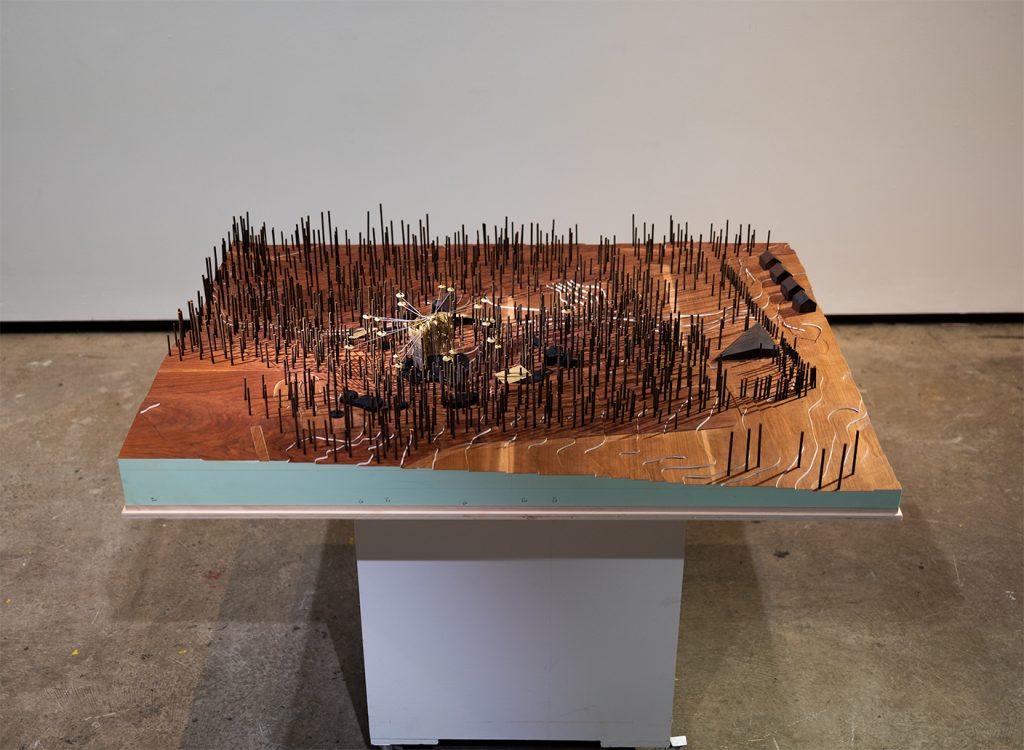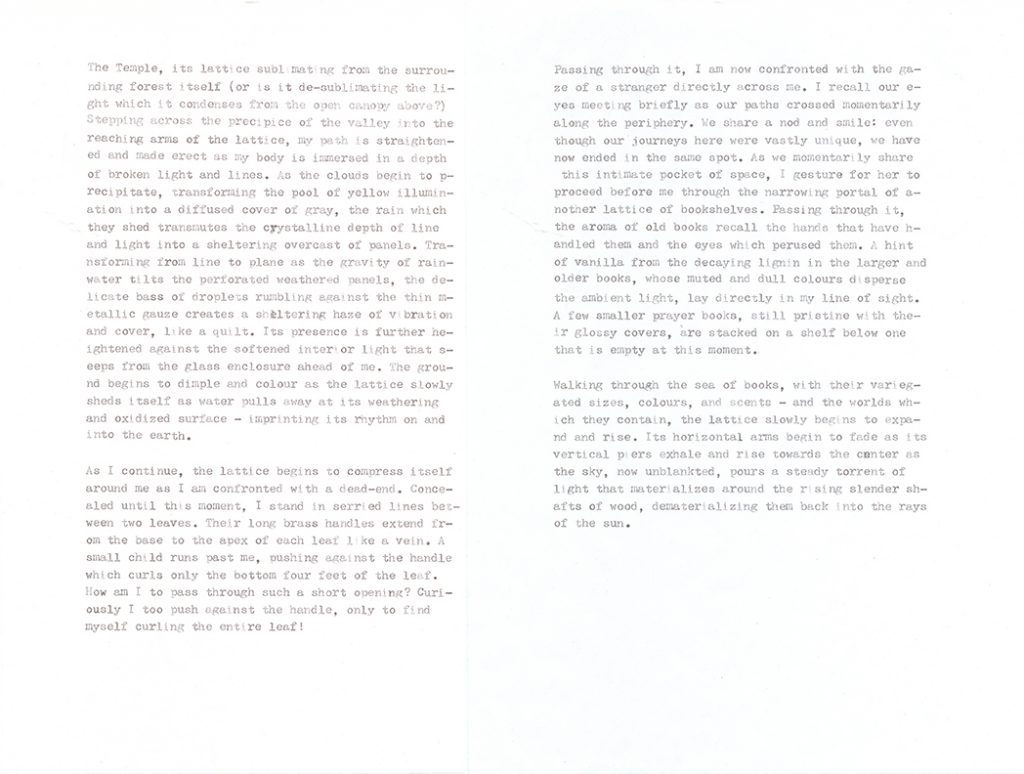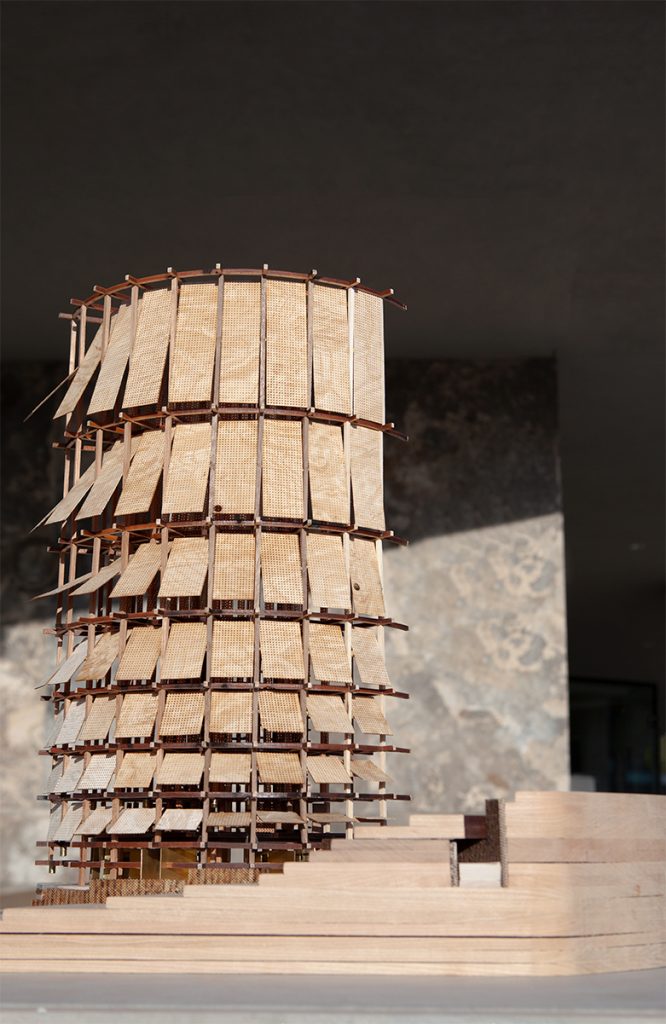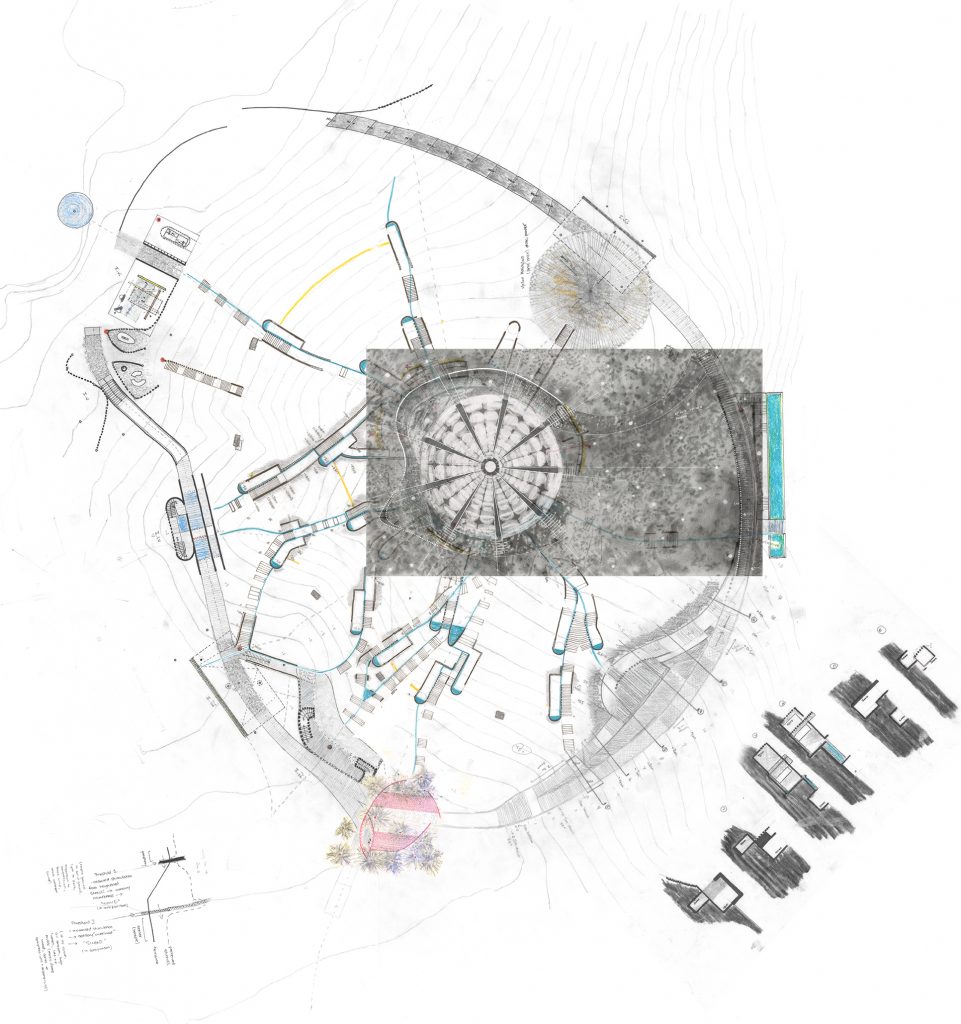Master’s thesis wins international prize for religious architecture
June 11, 2024
An alumnus of the Azrieli School of Architecture & Urbanism has won a prize in the Faith & Form International Awards Program for Religious Architecture & Art, for his master’s thesis proposing a Bahá’í temple in Thornhill, Ont.
Vedad Haghighi, who graduated from the Master of Architecture program in 2022, received the Student Work Award for The Nine Valleys – A Bahá’í Temple for Canada. He is now an intern architect and project manager in Toronto, Ont.


Assistant Professor Jerry Hacker was his thesis supervisor and Associate Professor Ozayr Saloojee was the co-supervisor.
“This student project is distinguished through its beautiful drawings to communicate its design,” said the jury. “There is a great sense of conveying the haptic quality of these sacred spaces. The connection to the landscape is very sensitive and inviting, with a great sensitivity to passive ecological design.”
The act of design, said Haghighi, included a four-year engagement with the land “in private meditation and contemplation through open-air sketches, the collection of found items into artifacts of exploration, and reflective fireside talks with friends and colleagues.”
Presented by Partners for Sacred Places, the 2023 awards recognized excellence in the creation, restoration, and re-use of religious spaces, the designing of religious landscapes, and the making of religious art.
The jury members were Robin Edward Whitehurst, (jury chair), Jacquelyn Block, Jennifer Correia, Steven Rajninger, and Daniela Holt Voith.
Nominations for the 2024 awards can be submitted from July 1 through October 11, 2024. Visit faithandformawards.com for more information.

The Nine Valleys — A Bahá’í Temple for Canada
Vedad Haghighi
This master’s thesis proposed a Bahá’í temple in Thornhill, Ontario, as guided by the Institution of the Mashriqu’l-Adhkár — a law embodied in the Bahá’í faith. The coherence of worship and service is at the heart of this institution, which endeavors to uplift the spiritual, social, and material conditions of society.
The existing site houses the administrative center for the Bahá’í community and its extensive grounds.
The act of design relied on the spirit of its subject matter: a four-year-long engagement with the land itself in private meditation and contemplation through open-air sketches, the collection of found items into artifacts of exploration, and reflective fireside talks with friends and colleagues. This approach led to the decision to meld the temple into the forested valley and surround it with nine gardens.
Friends begin their journey by moving through the interconnected gardens, instilling an awareness of natural spatial experiences.
The next step is a series of descending stairs, platforms gently leading into earthen passages that dim the sense of sight, making the ears receptive to what the site has to say. In the valley, the temple—a circular, symmetrical lattice as tall as the surrounding trees—appears, quilted by fragments of metal panels that move with the wind and rain.

